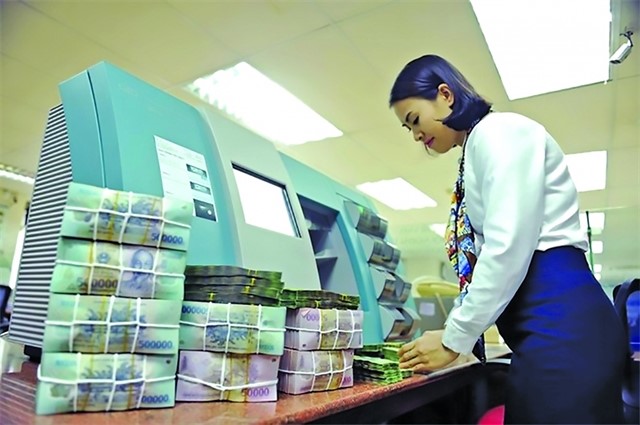Vietnam Investors Service (VIS Rating) predicts the industry's return on average assets (ROAA) will recover from wider net interest margins (NIM) and stronger loan growth and support capital generation.

After enduring a year of economic slowdown and rise in non-performing loans (NPL) last year, profitability of the Vietnamese banking industry will strengthen in 2024 as stronger domestic operating conditions and low interest rates drive improvements in borrower debt serviceability and asset quality, analysts forecast.
In a report released this week, Vietnam Investors Service (VIS Rating) predicts the industry's return on average assets (ROAA) will recover from wider net interest margins (NIM) and stronger loan growth and support capital generation.
In addition, funding and liquid resources will remain steady as deposit growth keeps pace with credit growth and banks increase longer-term funding.
According to VIS Rating, NPL formation rate will slow as borrower debt repayment capability improves amid stronger domestic operating conditions and low interest rates. Various Government policies and legal regulation changes to boost investment and domestic consumption will take effect and help drive business activities and stronger operating cash flows for domestic businesses. Low interest rates will alleviate the repayment burden and improve debt serviceability for retail and small- and medium-sized enterprise (SME) borrowers.
“We expect the sector-average NPL ratio will decline to 1.7-1.8 per cent in 2024 from a five-year high of 1.9 per cent in 2023. The pace of loan restructuring (some 1.2 per cent of total loans) will stabilise. Asset risk from real estate exposures will continue to stabilise as developers obtain the necessary legal approvals to commence project development and gain access to financing,” VIS Rating said in the report.
However, the report said, high leverage and slow recovery in cash flows for developers embroiled in legal issues and/or speculative projects will continue to be a key risk to bank asset quality.
According to the report, profitability will improve from wider NIM and stronger loan growth.
In 2024, VIS Rating expects sector average ROAA will increase marginally to 1.7 per cent in 2024 from 1.6 per cent in 2023 as NIMs widen by 20-30 basis points from the prior year to around 3.8 per cent. Most banks will be able to re-price deposits at lower rates quicker than loan. Loan growth will increase to 14-15 per cent, driven by credit demand from domestic trade, manufacturing and real estate developers. Non-interest income growth will be modest, driven mainly by settlement services, offsetting weak sentiment in bancassurance products and lower investment income. Credit costs will remain high as banks replenish their provision coverage from tough levels in 2023, especially mid- and small-sized banks.
VIS Rating believes the loss absorption buffer will remain stable as internal capital generation improves to support business growth. Even as profits improve to support provisioning and replenish capital, we expect bank capital levels to remain broadly flat in 2024. Only a few banks have announced capital-raising plans. Overall, the banking sector’s capital adequacy ratio will remain weak at around 11-12 per cent. Provisioning coverage for mid- and small-sized banks will remain lower than sector average as they will take longer to raise provisioning levels following severe asset quality deterioration in 2023.
Funding and liquid resources will remain stable as deposit growth keeps pace with credit growth and banks increase longer-term funding. We expect banks’ deposit growth will be supported by stronger corporates’ cash flows alongside improved business conditions. Moreover, banks will actively seek new long-term bond funding to maintain short-term funding to medium- and long-term loan ratios (SMLR) below the 30 per cent threshold. — VNS





